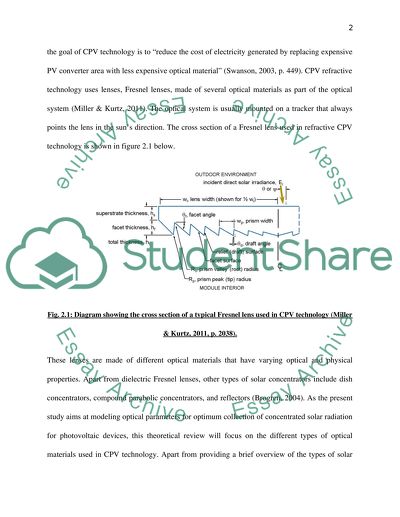Theoretical review in optical materials used in Concentrating Dissertation. Retrieved from https://studentshare.org/physics/1400308-chapter
Theoretical Review in Optical Materials Used in Concentrating Dissertation. https://studentshare.org/physics/1400308-chapter.


